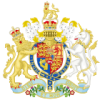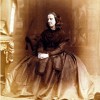Test Timeline
Created by Emily Beckwith on Wed, 08/19/2020 - 16:12
Part of Group:
Testing this out before I create one on my class page.
Timeline
Chronological table
| Date | Event | Created by | Associated Places | |
|---|---|---|---|---|
| 17 Aug 1839 |
Act on Custody of Infants
Related ArticlesRachel Ablow, “‘One Flesh,’ One Person, and the 1870 Married Women’s Property Act” Kelly Hager, “Chipping Away at Coverture: The Matrimonial Causes Act of 1857″ Jill Rappoport, “Wives and Sons: Coverture, Primogeniture, and Married Women’s Property” |
Dave Rettenmaier | ||
| 17 Nov 1855 |
Men and Women
Robert Browning’s Men and Women was a major literary event in nineteenth-century Britain in its shift of emphasis from the private, atemporal and generally non-social genre of Romantic lyricism to the ironies and enigmas of human awareness and social relationships, to dramatic action in human speech. His men and women are presented overtly as speech acts, grounded in psychological and cultural origins, and in the ambiguities of linguistic processes. Readers often found Browning’s mode of writing obscure, but its methods and implications consistently engage with other domains of Victorian thought, in religion, biology, and psychiatry. While the status of this publication was not widely understood at the time, its value is manifest in its reception history, in the discussion and representations that constitute its ongoing existence as a historical event. Articles |
Dave Rettenmaier | ||
| 14 Mar 1856 |
Petition for Reform of Married Women’s Property LawOn 14 March 1856, presentation of the Petition for Reform of the Married Women’s Property Law, 1856. The petition began the joint effort by lawmakers and public women to grant married women control of their own wealth. ArticlesJill Rappoport, “Wives and Sons: Coverture, Primogeniture, and Married Women’s Property” Related ArticlesRachel Ablow, “‘One Flesh,’ One Person, and the 1870 Married Women’s Property Act” Anne D. Wallace, “On the Deceased Wife’s Sister Controversy, 1835-1907″ |
Dave Rettenmaier | ||
| 28 Aug 1857 |
Matrimonial Causes Act of 1857
ArticlesKelly Hager, “Chipping Away at Coverture: The Matrimonial Causes Act of 1857″ Related ArticlesRachel Ablow, “‘One Flesh,’ One Person, and the 1870 Married Women’s Property Act” Jill Rappoport, “Wives and Sons: Coverture, Primogeniture, and Married Women’s Property” |
Dave Rettenmaier | ||
| 1858 |
English Woman’s Journal first published
Articles |
Dave Rettenmaier | ||
| 9 Aug 1870 |
1870 Married Women's Property Act
This Act established limited protections for some separate property for married women, including the right to retain up to £200 of any earning or inheritance. Before this all of a woman's property owned before her marriage, as well as all acquired after the marriage, automatically became her husband's alone. Only women whose families negotiated different terms in a marriage contract were able to retain control of some portion of their property. ArticlesRachel Ablow, "On the Married Woman's Property Act, 1870" Related ArticlesKelly Hager, “Chipping Away at Coverture: The Matrimonial Causes Act of 1857″ Jill Rappoport, “Wives and Sons: Coverture, Primogeniture, and Married Women’s Property” Anne Wallace, “On the Deceased Wife’s Sister Controversy, 1835-1907″ |
Dave Rettenmaier | ||
| Jan 1877 |
Fat and Blood and How to Make Them
Articles |
Dave Rettenmaier | ||
| 27 Nov 1879 |
London School Board ElectionsOn 27 November 1879 occurred the election for seats on the London School Board for the Third Board. Articles |
Dave Rettenmaier | ||
| 1 Jan 1883 |
1882 Married Women's Property Act
ArticlesJill Rappoport, “Wives and Sons: Coverture, Primogeniture, and Married Women’s Property” Anne Wallace, “On the Deceased Wife’s Sister Controversy, 1835-1907″ Related ArticlesRachel Ablow, “‘One Flesh,’ One Person, and the 1870 Married Women’s Property Act” |
Dave Rettenmaier | ||
| Aug 1888 to Sep 1889 |
Jack the Ripper murdersFrom August 1888 to September 1889, the serial killer known as the Whitechapel Murderer or Jack the Ripper stalked women living in the East End of London. Related ArticlesHeidi Kaufman, “1800-1900: Inside and Outside the Nineteenth-Century East End” |
Dave Rettenmaier | ||
| 26 Nov 1888 |
London School Board electionsOn 26 November 1888 occurred the election for seats on the London School Board for the Sixth Board. Articles |
Dave Rettenmaier |




